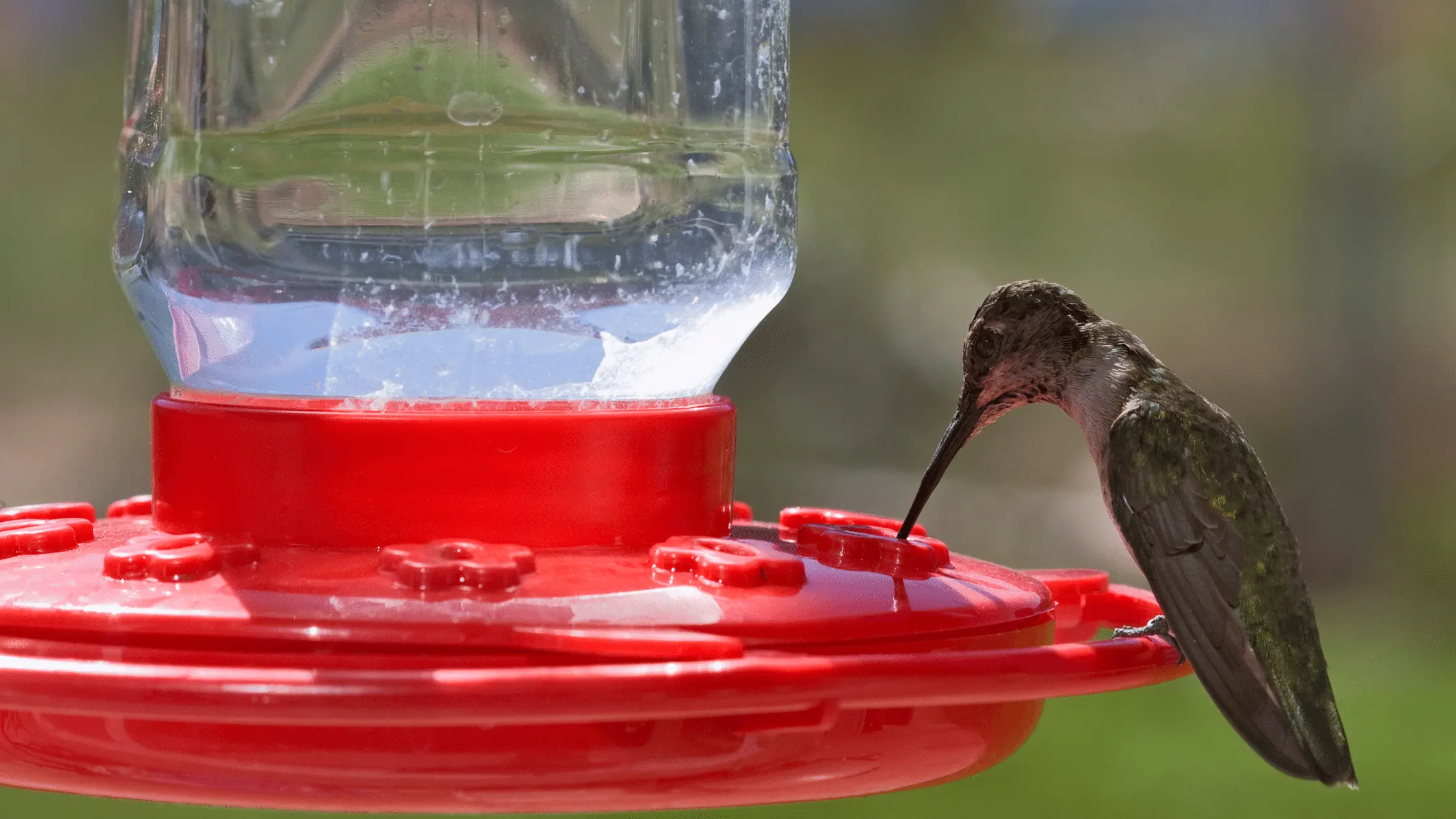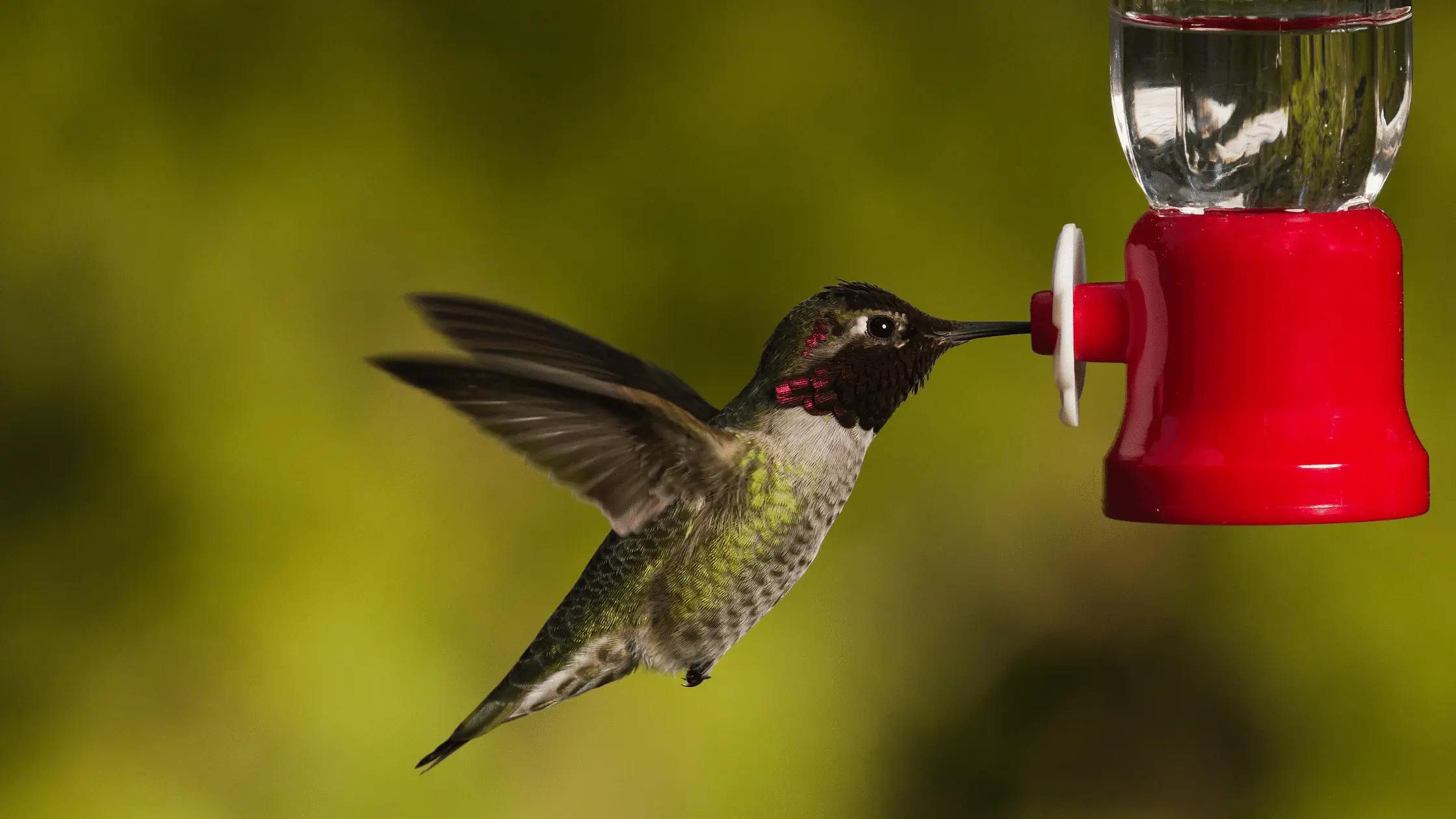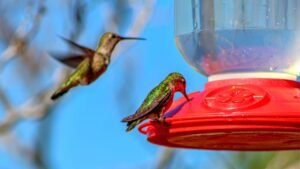Is it better to change your hummingbird feeder daily, weekly or monthly?
Hummingbirds are often drawn to nectar sources around them. If you have a garden feeder, these birds are bound to frequent the feeder.
However, hummingbird feeders need maintenance to keep attracting these beautiful feathered creatures, so you have to understand the factors that can determine how often you need to change and clean a feeder.
In this article, you will find all you need to know about changing hummingbird feeders and quality cleaning tips to help you keep your feeder neat.
Why You Have To Change Hummingbird Feeders
The typical hummingbird diet is made up of nectar. Most of these nectar solutions are made from water and sugar. These nectar solutions ferment over time, especially in summer. During these moments, the nectar solution becomes a harmful and unwanted liquid, pushing hummingbirds back to other food sources.
Unclean feeders promote the growth of bacteria, as nectar solutions form slimy molds when they get spoilt. Hummingbirds are sensitive creatures, so even the slightest exposure to bacteria can cause illness or even death in some cases.
How Frequently Should You Change A Hummingbird Feeder

The number of times you need to change a hummingbird feeder depends on the year’s season. Thus, your changing cycle depends solely on your region’s climate and weather conditions during specific periods. In warm weather conditions, it is better to change the content of your feeder at least two to three times a week. Sugar solutions ferment and form molds at a faster time frame during warm climes.
You can change your nectar solution in colder climates and clean your feeder weekly. Even if hummingbirds finish the content of your feeder in just two days, you have to clean up the feeder before adding a new solution. This way, you prevent particles of older solutions from mixing up with the new ones.
It is pretty daunting to feed hummingbirds hygienically. However, the work is worth it, as it encourages healthiness among the birds while maintaining cleanliness in your surroundings.
Factors That Can Affect How Often You Have To Clean A Feeder

Type Of Hummingbird Feeder
The type of hummingbird feeder you use can influence your recommended cleaning frequency. If you use a feeder with wide feeding ports, you have to clean it daily, as it is prone to contamination from bees, wasps, and other external elements. At the same time, feeders with narrow mouths can be cleaned up every 2-4 days, as they rarely permit external contamination.
Weather
Weather conditions can affect hummingbird nectar and influence how often you clean and change a feeder. In windy weather, your feeder may hold external dirt and other particles. Also, feeding ports could easily cover up if using a narrow-mouthed feeder. You would have to clean your feeder every two days and change your solution.
In hotter weather, you have to change your solution more often, as hot temperatures promote faster fermentation and growth of microorganisms. Once these nectar solutions ferment, they turn into alcoholic solutions, which are dangerous for hummingbirds.
How To Clean Your Humminbird Feeder
There are several methods for cleaning hummingbird feeders. After carefully researching the pros and cons of these methods, we have devised a perfect cleaning style that you can utilize.
Here is the safest way you can clean your hummingbird feeder.
Empty and Dismantle Your Feeder
The first step towards cleaning your hummingbird feeder is to empty your leftover nectar solution and pour it away in a drainage or far away from your house. Once this is done, you must dismantle the feeder for more straightforward cleaning.
If you notice that you always have huge leftover nectar solutions, you have to reduce the quantity to avoid too much waste.
Soak With Hot Water And Vinegar
Once you have dismantled your feeder, the next step is to put all parts of the feeder in a cleaning solution made up of hot water and vinegar. Once you have submerged all parts of the feeder in this solution, you can leave it there for about an hour to weaken all remaining nectar particles on the internal walls.
Scrub With A Soft Brush
After soaking your feeder for about one hour, you must scrub it with a soft brush. Focus on cleaning the interior and feeding ports, as these are the critical areas of the feeder. Pay close attention, and clear any nectar molds stuck anywhere. Depending on the feeder, If you cannot dismantle and access the interior, you can pour in your cleaning solution, shake it several times and pour it out.
Rinse With Clean Water And Dry
When you are satisfied with scrubbing your feeder, you can place all parts in a basin filled with clean water. At this point, you can rinse thoroughly and wipe it dry with a clean towel. Alternatively, you can turn your feeders upside down and keep them outside to dry in the open air.
Refill With New Solution
Following all the cleaning steps, you can refill your feeder with a new solution and hang it back in its position.
Final Verdict
Cleanliness is an essential factor that significantly affects our health. Thus, keeping a dirty hummingbird feeder around you could be dangerous to both you and the birds.
Of course, it is pretty daunting to meet up with the process of cleaning up and changing your hummingbird feeders. However, by adopting the simple cleaning method in this article, you can keep your feeder neat whenever you change the solution.
In summer, you have to change your nectar solution and clean your feeders thrice weekly. On the contrary, nectar solutions last longer in colder climes, so you can do the cleaning process once or twice a week in cold seasons.





